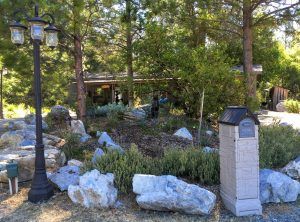Years ago, I lived on the outskirts of the community of Groveland, included in the area of the 1987 Stanislaus Complex Fires. After this major disaster in our local area about 35 years ago, recommendations for changes in landscaping were slow to be developed and published. Now, however, we have thoughtful and well-researched plans for homeowners in our fire prone region. Implementation is our next big step.
The National Fire Protection Association, Firewise USA® teaches people how to adapt to living with wildfire and encourages neighbors to work together and act to prevent losses. Firewise communities are those that have taken appropriate measures to become more resistant to wildfire structural damage, and minimize the risk of home ignition by carefully landscaping around residential structures. Techniques include thinning trees and brush, choosing fire-resistant plants, selecting ignition-resistant building materials and positioning structures away from slopes.
As we have witnessed from the recent devastating Maui fires, everything in the environment can be damaged by wildfires, and “…. humans are directly responsible for around 90% of the state’s wildfires” (the percentage has grown over the years.) According to a new study published in the International Journal of Wildland Fire, researchers from 15 universities examined wildfire data from 1980 through 2020 and found that wildfires are getting worse because of climate change. (July 27, 2023)
However, there is good news here! We are human and can effect change. Not to say this is an easy task. Even though it been slow-going for me to alter how I practice landscaping—even with glaring, well-researched evidence—I have found that fire safe changes create positive, satisfying and healthful outcomes in my yard. (I did find a red eared slider turtle who wanted to make friends. I took him/her to Rose Wolf Wildlife Rescue.)
Some changes I have made include removing plantings close to my house. Sometimes this means death for a well-cared-for shrub or bush. This is especially tough for me! I haven’t completed the recommended 30-foot clearance, but I’m working on it. Also, after I remove a plant near my house, I choose a less flammable alternative to plant beyond the clearance area. I live in zone 8b and try to follow the guidelines for my zone while also checking flammability.
Check this free pdf guideline primarily for zones 7-9. It’s a download produced by several universities.
Another invaluable practice is to check with your neighbors to see which plants they’re growing and compare notes. This gives the opportunity to display mutual successes and commiserate losses.
Along with plant removal, regular pruning of shrubs and trees is a valuable tool for the fire wise landscape. That said, while I’ve read books and brochures, and attended numerous pruning demonstrations, I still feel some trepidation when I’m ready to begin cutting. If you’re like me in that regard, try to remember that the benefits (almost) always outweigh any damage inflicted, and regular pruning will lessen flammability of carefully chosen plants.
After all is said and done, my yard is a work in progress, and I look at my Firewise consciousness and actions as benefits to the environment. As famous rights activist Marian Wright Edelman said, “We must not, in trying to think about how we can make a big difference, ignore the small daily differences we can make which, over time, add up to big differences that we often cannot foresee.”
Sylvia Watterson is a University of California Cooperative Extension Master Gardener of Tuolumne County.

